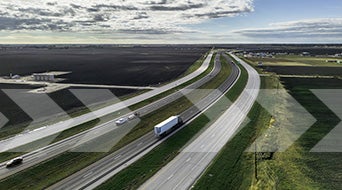Freight Resources
Spot vs contract freight: What’s right for your business?
When it comes to freight shipping costs, you may wonder “am I better off with contract freight rates or spot rates?” The short answer is that full truckload (FTL) and less-than-truckload (LTL) shippers use both for different reasons and at different times. And whether we’re in a disruptive or stable economy, using both contract and…
Read MoreHow 3PLs Help Combine Outbound & Inbound Logistics
How a 3PL Can Help Combine Outbound and Inbound Logistics Businesses sometimes tend to put all their efforts into outbound logistics. They find the right carriers, decide on price and choose services. It’s what they can control. Inbound logistics, on the other hand, is often left to their suppliers who line up the carriers, select…
Read MoreHow a 3PL Can Help You Navigate White Glove Freight Service
White glove logistics allow you to differentiate yourself from competitors and open revenue streams that lead to increased profitability. Those services include packing, boxing, crating, padding, wrapping and assembling your customers’ valuable and fragile shipments for them as an elevated shipping service. However, understanding how to leverage white glove shipping can sometimes be a challenge…
Read MoreWhy To Use White Glove Shipping Service To Improve Your Company’s Brand Image
Today’s shipping marketplace is competitive, where customers have multiple choices. That’s why it’s important to stand out from your competitors and offer every shipping option that helps deliver products in one piece and on time while building brand awareness and customer loyalty. One such service is white glove shipping, a solution which includes value-add “extras”…
Read MoreFreight Recession: We Debunk 4 Myths and Provide Tips on How To Survive It
Chances are, as a freight shipper, you’ve been impacted by the current freight recession that has sent the shipping industry into a tailspin. As a result, you most likely have a lot of questions about what it means to you and how you can protect your business. Below, Worldwide Express addresses some of the common…
Read MoreHow a 3PL Freight Services Provider Can Help Shippers (Like You!)
There are many ways that businesses can get their freight shipped to their destination. There is no one-size-fits-all approach. Many shippers try to manage logistics on their own, while others seek out the guidance of a shipping partner that provides third-party logistics (3PL) freight services. Regardless of how you approach freight shipping, you should know…
Read MoreAccess Top LTL and FTL Freight Shipping Services from Worldwide Express
Freight shipping can be overwhelming for businesses of all sizes. That’s where we come in! From small to mid-sized businesses (SMBs) to large enterprises, it’s becoming increasingly commonplace for companies to partner with a third-party logistics (3PL) provider like Worldwide Express for outsourced logistics solutions. Read on to learn more about our top freight shipping…
Read More5 Things To Look For in an Expedited Freight Provider
When you’re on a tight deadline and shipments must be delivered quickly, you have many freight shipping solutions to choose from to move products from pickup to destination. Oftentimes, shippers think that expedited air is their only option in these cases when, in fact, expedited freight shipping can get deliveries there just as quickly and…
Read MoreAre you missing out by shipping LTL vs FTL?
For many small to mid-sized business (SMB) shippers, less-than-truckload (LTL) shipping provides a prime opportunity for transporting freight. However, some SMB shippers may be missing out on saving both time and money by shipping only LTL and not exploring their full truckload (FTL) shipping options. These shippers may think that LTL freight shipments are their…
Read MorePros and Cons of Blind Shipping and How To Use It to Your Advantage
Have you thought about adding blind shipping to your business strategy? You’re not alone. Many shippers today are utilizing this logistics solution to save time and cut costs. Simply put, blind shipments allow you to ship to your customer directly from a manufacturer/supplier while keeping the identity of the latter anonymous. This prevents the customer…
Read More








